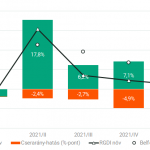NBER Working Paper No. 21939
Issued in January 2016
NBER Program(s): AG
This is the introduction and summary to the seventh phase of an ongoing project on Social Security Programs and Retirement Around the World. The project compares the experiences of a dozen developed countries and uses differences in their retirement program provisions to explore the effect of SS on retirement and related questions. The first three phases of this project document that: 1) incentives for retirement from SS are strongly correlated with labor force participation rates across countries; 2) within countries, workers with stronger incentives to delay retirement are more likely to do so; and 3) changes to SS could have substantial effects on labor force participation and government finances. The fourth volume explores whether higher employment among older persons might increase youth unemployment and finds no link between the two. The fifth and sixth volumes focus on the disability insurance (DI) program, finding that changes in DI participation are more closely linked to DI reforms than to changes in health and that reducing access to DI would raise labor supply.
This seventh phase of the project explores whether older people are healthy enough to work longer. We use two main methods to estimate the health capacity to work, asking how much older individuals today could work if they worked as much as those with the same mortality rate in the past or as younger individuals in similar health. Both methods suggest there is significant additional health capacity to work at older ages. This paper is available as PDF (1713 K).
Nem található esemény a közeljövőben.
A KRTK Közgazdaság-tudományi Intézet teljesítményéről A KRTK KTI a RePEc/IDEAS rangsorában, amely a világ közgazdaság-tudományi tanszékeit és intézeteit rangsorolja publikációs teljesítményük alapján, a legjobb ... Read More »

Tisztelt Kollégák! Tudományos kutatóként, intézeti vezetőként egész életünkben a kutatói szabadság és felelősség elve vezetett bennünket. Meggyőződésünk, hogy a tudomány csak akkor érhet el ... Read More »

Srí Lanka: a 2022-es gazdasági válság leckéje – A. Krueger Lessons from Sri Lanka Anne O. Krueger Jul 25, 2022 – Project Syndicate ... Read More »

A permanens válság korában élünk – J. Meadway We’re living in an age of permanent crisis – let’s stop planning for a ‘return ... Read More »

A 2021 végén, illetve 2022 elején tapaszalt 6, illetve 7%-os cserearányromlás brutális reáljövedelem-kivonást jelentett a magyar gazdaságból. A külső egyensúly alakulásával foglalkozó elemzések többnyire ... Read More »
